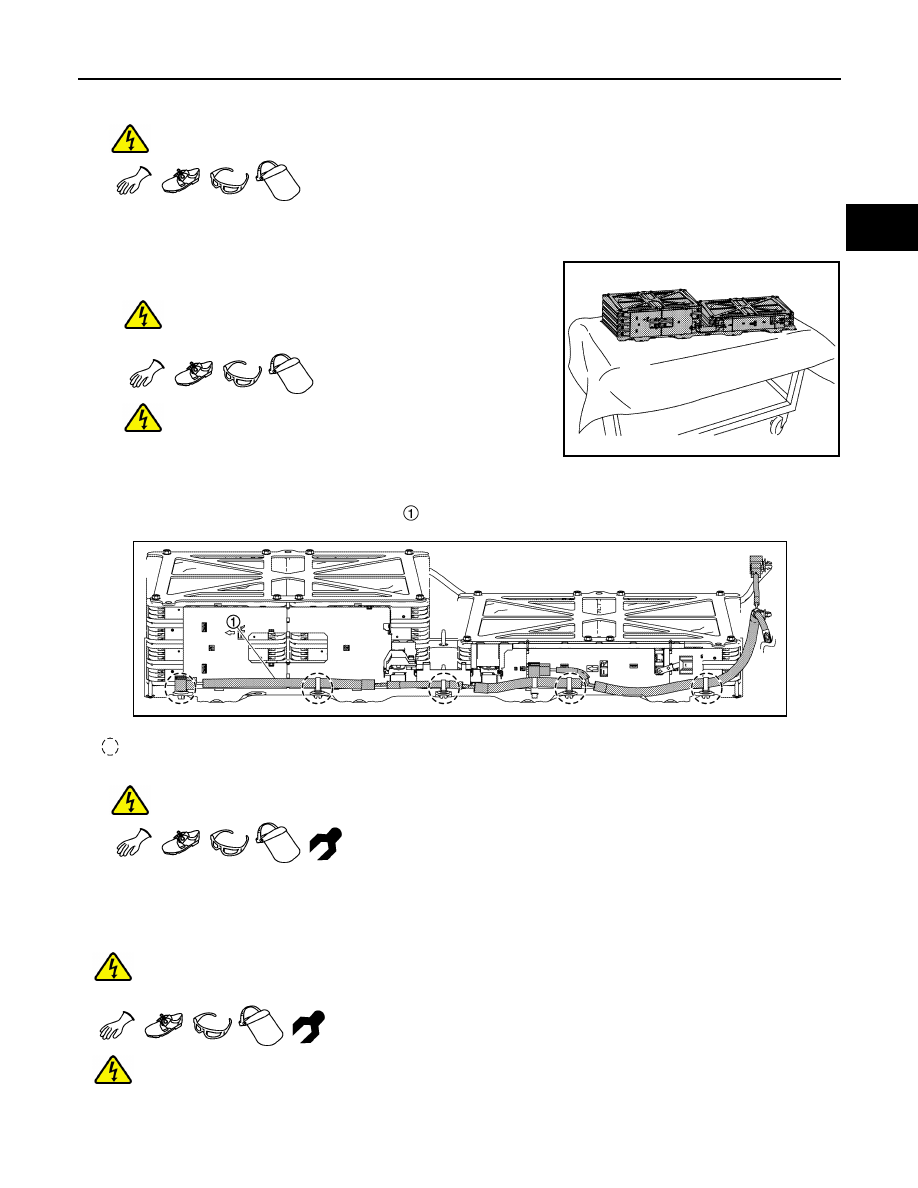Nissan Leaf. Manual - part 487

LI-ION BATTERY
EVB-231
< UNIT DISASSEMBLY AND ASSEMBLY >
D
E
F
G
H
I
J
K
L
M
A
B
EVB
N
O
P
c. Move the battery pack and place the workbench below the front module stack.
WARNING:
To prevent electric shock, wear insulated protective gear.
CAUTION:
Place the removed battery pack upper case onto the battery pack for storage.
d. Place the front module stack onto the workbench.
WARNING:
•
To prevent electric shock, wear insulated protective
gear.
•
Because there is a risk of electric shock, lay an anti-
static rubber sheet on the workbench.
NOTE:
The figure shows the front module stack RH.
14. Remove the Li-ion battery heater harness .
WARNING:
To prevent electric shock, wear insulated protective gear and use insulated tools.
INSTALLATION
Note the following items, and disassembly in the reverse order of disassembly.
DANGER:
•
There is the danger of electric shock caused by contact with the terminals. Be sure to wear
insulated protective gear and use insulated tools.
•
Because there is a danger of electric shock and fire, never allow bus bar to contact a wrong ter-
minal.
- If bus bar contacts a wrong terminal, the circuit becomes energized and a short may occur.
- Always keep the bus bar cover closed until immediately before the installation of bus bar.
JSCIA0719ZZ
: Harness clip
JSCIA0782ZZ